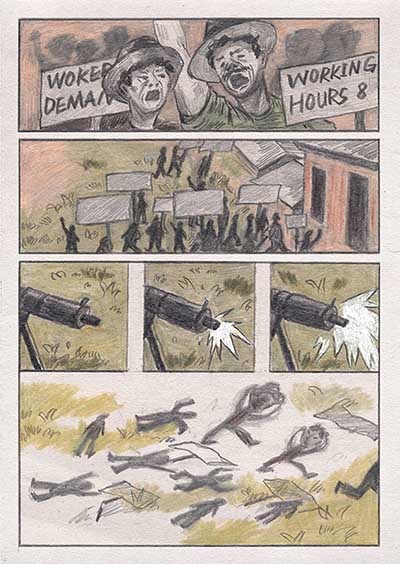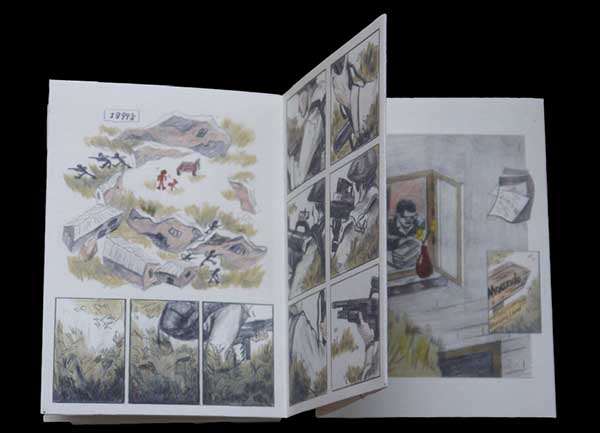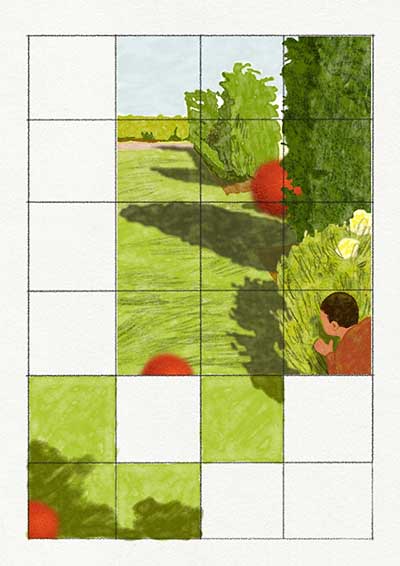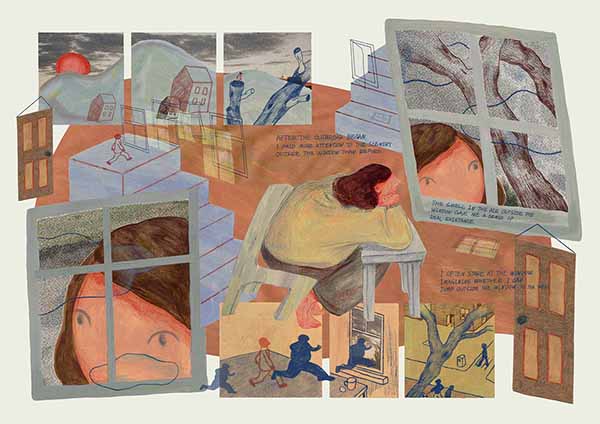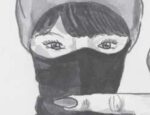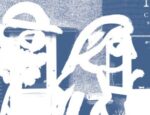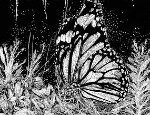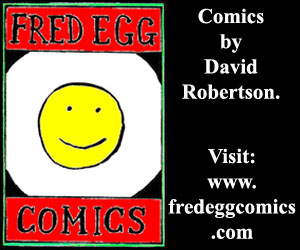THOUGHT BUBBLE MONTH 2024! 10 YEARS OF THE BF SIX TO WATCH! Zhenyi Zheng is one of this year’s Broken Frontier ‘Six to Watch’ artists whose work particularly caught my eye when I was drawing up the creator shortlist last year for its experimentation and willingness to push the possibilities of the form. If you visited the Six to Watch exhibition at The Chapel at St. Margaret’s House in London during the summer or attended the panel on self-publishing that I moderated at the South London Comic and Zine Fair in 2023 you will already be aware of her practice. If you didn’t you are about to discover much more! Today, in the fifth of this year’s ‘Six to Watch’ spotlight interviews, I chat with Zheng about the potential of the medium, creating comics in lockdown, and working in children’s illustration…
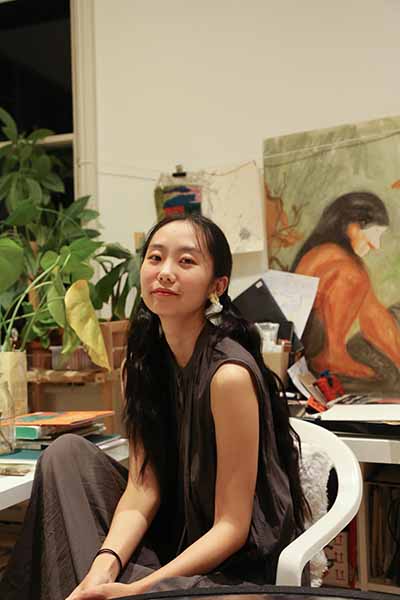 ANDY OLIVER: As one of our 2024 ‘Six to Watch’ artists let’s begin by introducing you to our Broken Frontier readership. Can you tell us about your wider artistic practice and endeavours, and your background?
ANDY OLIVER: As one of our 2024 ‘Six to Watch’ artists let’s begin by introducing you to our Broken Frontier readership. Can you tell us about your wider artistic practice and endeavours, and your background?
ZHENYI ZHENG: I’m an independent illustrator, comic creator and visual designer based in London. I graduated from MA Visual Communication(Illustration Pathway) at the Royal College of Art in 2021. Then, I started my professional career as a freelancer. My practice includes comics, editorial illustrations, commercial illustrations, children’s books and visual design.
I tell stories from memory, observation and imagination, and explore the internal and external experiences of ordinary days. I usually capture life details from unspoken spaces, moments,and objects that are often ignored or unnoticed. My work is influenced from sequential art and takes advantage of films and photography, and realised in flickering lines and soft colour. I love to deposit my work in a place between reality and fiction as a silent narrative, with an objective tone and sober perspective, also, last but not least, adding some toppings of humour.
AO: I first discovered your work when I reviewed your short comic Banana Trap which is based on Gabriel Garcia Marquez’s 1961 novella No One Writes to the Colonel. How did you go about adapting that for the comics page? And why did you choose the particular form of physical presentation for the comic that you did?
ZHENG: Banana Trap originally emerged from a group project when I was at the Royal College of Art. The project’s outcome was a publication of a visual adaptation of Gabriel Garcia Marquez’s 1961 novella No One Writes to the Colonel. Each group member gives specific interpretation in any artistic format with their own visual language. Through reading the novel, I found the most interesting thing was that the ‘banana fever’ was mentioned several times. In fact, “banana fever” symbolizes the economic exploitation, social inequality, and resource plundering that Latin American countries suffered in the early 20th century. Behind this event lies an implicit critique of the domination and destructive impact brought by multinational corporations like the United Fruit Company in the region, highlighting the profound effects of poverty and social turmoil on the lives of ordinary people.
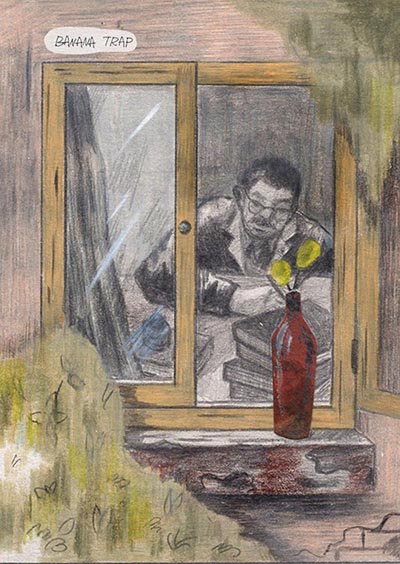
Banana Trap
However it wasn’t described in a detailed way in the novel, nor was the massacre of banana workers. Then, I thought it was worth it to visually present that historical event in front of the audience. I researched the contexts and visual materials related to this period and began drafting the script. The opening pages depict the colonel’s impoverished life, where he eats mushrooms and experiences hallucinations (in the novel, mushrooms are one of the few foods available to the colonel and his wife, symbolizing their poverty and lack of resources). The story then shifts to 1899, the era of war and plunder, gradually revealing the brutal history of the banana workers’ massacre. The story culminates at the massacre scene, ending abruptly at its climax, leaving the audience with the most harrowing moment.
Banana Trap
Presenting this comic in a concertina style is a relatively new experiment for me. I hope to find a way to fully unfold and display the entire continuous story, almost like a long scroll. I’ve always felt that the format of a book is an integral part of the creative process itself. Without restrictions from publishers or clients, I can give myself more space to experiment. Different formats bring different reading experiences.
AO: Banana Trap obviously deals with issues of worker exploitation and mistreatment. Why do you think comics are such a powerful medium when it comes to connecting with readers about subjects like these?
ZHENG: I believe that comics, like novels, are a form of serious literature. Comics, through their unique qualities, can use humorous and innocent visuals to tell a serious and brutal story or reality. This creates a powerful contrast, and it is precisely this contrast that heightens the gravity and brutality of the story itself. Instead of merely arranging images side by side, the essence of comics lies in blending visual and narrative elements to create a cohesive, dynamic experience.
Comics’ sequential structure allows for in-depth storytelling and building tension. Panel by panel, readers can witness the progression of events. This narrative progression helps readers understand the nuances of exploitation, such as its psychological toll and the systemic nature of the problem.
Banana Trap
AO: What really strikes me about your comics work is its intuitive understanding of how to experiment with the form. Comics like the excellent abstract and hypnotic Summer Maze on your website, for example, that you describe as “a short comic about searching for the truth.” What do you find unique about the storytelling possibilities of comics as a medium? How do they allow you to communicate with readers in ways that other forms don’t?
ZHENG: I am obsessed with experimenting with the form. I enjoy experimenting with panel layouts, playing with scale, arranging key elements thoughtfully, and using light effects to enhance the composition. Making a comic feels like directing a film, or building a world. It is a huge time-consuming progress and full of challenges. However, It brings infinite communication. You can use as many elements as you can: images, text, panel, gutter, colour, mark, line, border, frame, etc. For example, in Summer Maze, I used a lot of lines and marks to guide the reading flow and also experimented with frames.
Additionally, I think what makes comics most unique is that they are a medium that can encompass infinite time and space. Comics are a realm where multiple dimensions of time and space coexist on a single page. It’s a universe that feels both tiny and vast, simultaneously reflecting the past and anticipating the future.
Summer Maze
AO: One of your most intriguing projects is the pandemic-inspired Home Phrases series. It’s a fascinating piece of cross-media graphic narrative so I wonder if you might like to explain its aims further?
ZHENG: This project was grown during the period of lockdown life during the pandemic. In order to express several different home stories, I used various media forms, including illustrative comics, block toys, and videos, which coexist and translate into each other.
Home/domestic space is an eternal topic. Far beyond a physical habitat, it is a cultural infrastructure, a reflecting domain, a space of observation and imagination, a zone of self-awareness. I hope that this project can provide more insights about home and encourage a rethinking of the living spaces we take for granted.
Home Phrases
The initial inspiration for the toys came from the Rubik’s Cube and children’s block toys. I believe there is a certain similarity in form between comics/graphic narrative and these polyhedral blocks, they can be combined and reorganized. These toys are not just for play, they also serve as a ritual or a tool for self-healing. Furthermore, I see them as a storytelling tool. I’ve been researching their upgraded version recently and want to turn them into a puzzle. I enjoy using these blocks—they are truly the best story-generating tools. For example, a cube has six sides, and if each side presents a different image, by freely arranging and combining them, countless narrative possibilities can be created!
One of my influence artists is the Italian artist Enzo Mari. His significant projects 16 Animals and The Fable Games are an intelligent combination of storytelling, playness, graphic, and product design.
AO: You’ve mentioned a potential graphic memoir in the past. Is that something you’re still planning on working on?
ZHENG: Yes, absolutely, I am working on it now. This is a story about the years my flatmate and I have spent living in London. The process has been somewhat slow because I often end up reworking things; what I finish one day might not feel right the next, and I’ll start all over again. But I plan to post some process updates and interior pages on Instagram, and I’m aiming to complete it by the middle of next year. Stay tuned!
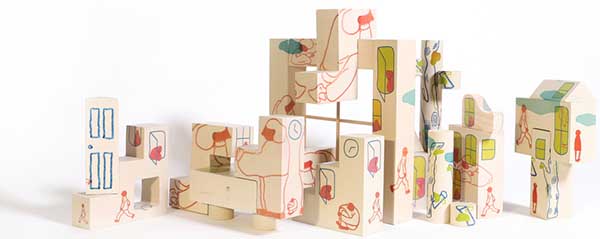
Home Phrases
AO: Last year I met you for the first time at the South London Comic and Zine Fair when I chaired a panel there on comics and self-publishing. As a newer voice on the scene what have been your impressions of the UK comics community and getting involved in it?
ZHENG: The UK comics community is so fascinating! There are many people in the UK who love comics, and the audience is super diverse. The industry is well-developed and mature, with many organizations, publishers, awards, media, and markets that actively support the creation and dissemination of comics. I’m excited to be part of this community, especially to be a member of Broken Frontier’s Six to Watch. I feel very lucky and am deeply grateful to you, Andy, for bringing me aboard. I feel that the creative environment and atmosphere for comics in the UK have, in a way, pushed me to keep creating.
Additionally, regarding that last panel, I’d like to thank another person, Katriona [Chapman, Avery Hill Publishing]. Without her invitation, I wouldn’t have been part of the panel that day. The UK’s comic scene is very welcoming to new voices, and diverse forms of expression, which is something I find very exciting!
https://www.brokenfrontier.com/wp-content/uploads/2024/11/summer-maze-1a.jpg
My Little King and His Wonderland
AO: You have also worked on children’s books. What kind of themes and subject matter have you covered in those?
ZHENG: Yes, children’s books are another parallel part of my practice. I have so far had three children’s books published in China. Two of them are adaptations from ancient Chinese folklore, another one My Little King and His Wonderland was just published in September this year. It is a fairytale written by a Chinese children’s book author and published by Shanghai Translation Publishing House, which is my favourite one. The story is an adventure in a fantasy world full of magical and extraordinary things, and finds his inner peace in the end. With fantasy and tenderness, this story softens the harshness of reality, easing the struggles of growing up with love and imagination. I usually collaborate with the writer, editor and publisher to complete the book. Now, I have just started working on a new series of fon-fiction children’s books about the architecture of 34 Provinces in China.
I am looking forward to getting more opportunities to work with international publishers and authors in the future!
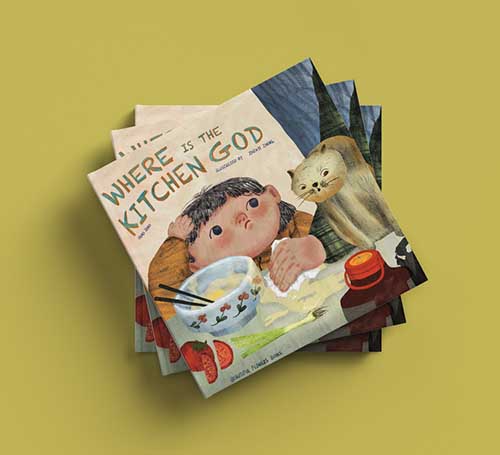
Where is the Kitchen God
AO: Tell us about your artistic process. What mediums do you work in?
ZHENG: Usually, I work in a mixture of traditional and digital mediums. For traditional mediums, watercolour, colour pencils, and promarkers are my favourite mediums in recent years. Sometimes, I use traditional mediums on paper first, then scan the paper and import them in Photoshop or Procreate on iPad to add further details. Also, I love to create different textures by using different physical mediums and techniques on paper, and blend these textures with the images by using Photoshop or Procreate. Depending on the time duration of projects, I choose varied mediums and methods. If there is editorial work that should be done in 3 days for example, I will use purely digital mediums to avoid consuming too much time.
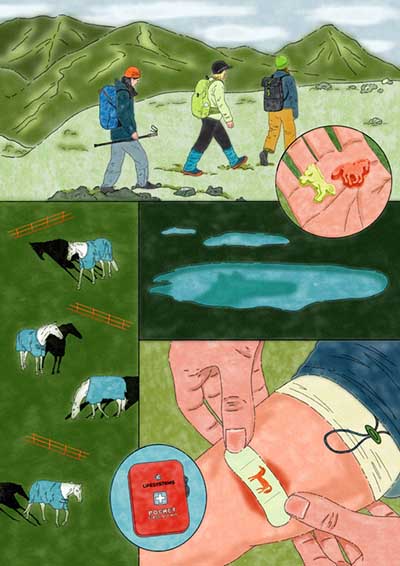
AO: What else are you working on? Are there any upcoming comics/art projects you can talk to us about? And are there any comics events in 2024 that readers can meet you at?
ZHENG: As I mentioned above, I’m working on my graphic memoir about me and my flatmate’s life in London. Two girls from China have lived in this city for five years. Five years is neither long nor short, but it’s enough time to have many stories to share. This is a graphic memoir about curiosity, exploration, identity, cultural clashes, and personal growth. In particular, alongside the narrative, there will be a board game developed based on the graphic memoir!! Another project I’m further developing is Home Phrases. I’m developing a zine that plays around different home elements and symbols. All these look forward to being done in the first half of 2025. Before that, I will release more work-in-progress on my Instagram, keep an eye out!
I’ll alsobe at Thought Bubble this year! I’m tabling at the Redshirt Hall, C39a. Come and say hi!!
Visit Zhenyi Zheng’s website here.
Interview by Andy Oliver
Zhenyi Zheng will be at Table c39a in the Redshirt Hall at Thought Bubble.
Thought Bubble 2024 runs from November 11th-17th with the convention weekend taking place on the 16th-17th. More details on the Thought Bubble site here.
Read all our Thought Bubble 2024 coverage so far in one place here.
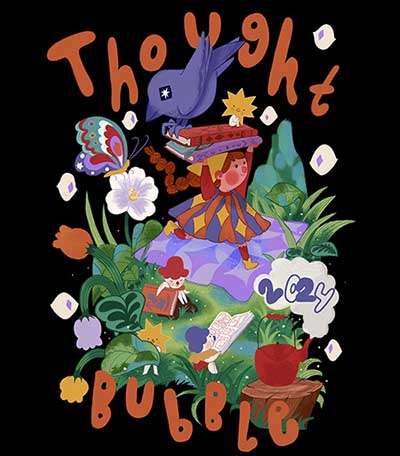
Art by Rocío Arreola Mendoza





